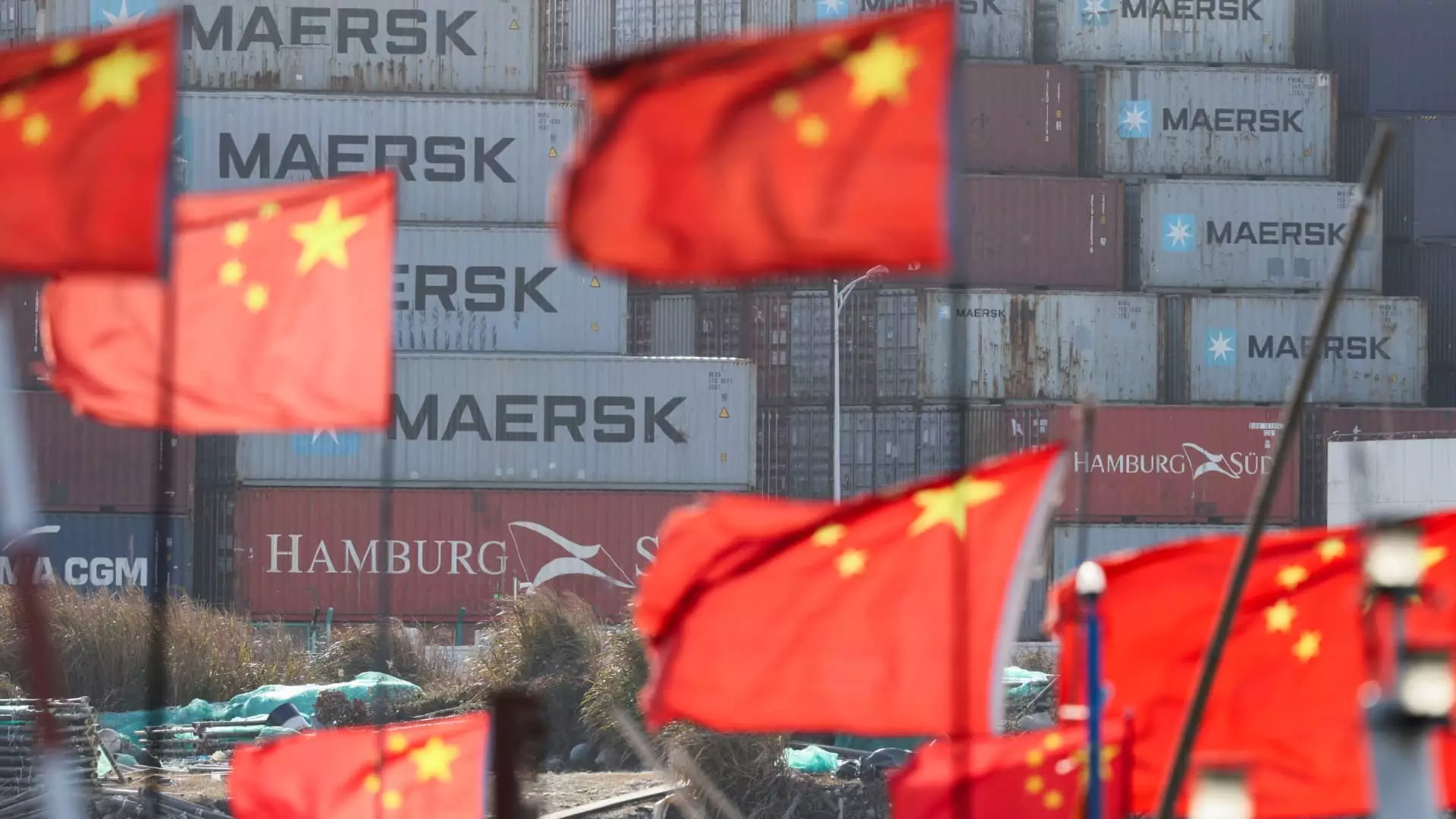In an era marked by geopolitical complexities and economic uncertainty, the recent implementation of increased tariffs by the United States against China marks a significant turning point in international trade relations. While analysts and observers may speculate wildly on the ramifications of these policies, it is vital to examine China’s steadfast approach in navigating this tumultuous landscape. Rather than succumb to aggression through retaliatory tariffs, the Chinese government’s focus on domestic stimulus and the strengthening of international partnerships reveals a strategic acumen that cannot be understated. In essence, China’s response paints a picture of prudence over provocation, prioritizing long-term growth over short-term tit-for-tat skirmishes.
Domestic Resilience in the Face of Adversity
Analysts assert that China’s emphasis on bolstering its internal economy is both a testament to its resilience and a necessary strategic pivot. The Chinese Ministry of Commerce’s calls for dialogue—rather than outright confrontation—underscore a commitment to negotiation and diplomatic engagement that contrasts starkly with the aggressive and unilateral measures often taken by the United States. Chinese President Xi Jinping’s recent meeting with technology titan Jack Ma highlights an evolving narrative within Beijing; one that elevates the private sector to a critical role in economic recovery and growth.
This proactive stance is crucial, particularly given that about 20% of China’s economy is contingent on exports. As tariffs hinder China’s traditional trade routes, focusing on domestic consumption is not merely an alternative; it is a lifeline. By fostering a more consumer-oriented economy, China can mitigate the adverse effects of external pressures and maintain its ambitious growth targets, projected around 5% for the year ahead.
Shifting the Trade Paradigm: New Alliances and Route Diversification
As stated by various economic experts, the increased tariffs are not just a hindrance but an opportunity for China to broaden its horizons and establish robust trade relationships elsewhere. The formation of the Regional Comprehensive Economic Partnership (RCEP) represents a significant shift in trade dynamics, positioning China as a central player in the largest free trade bloc in the world. It not only elevates China’s standing in Southeast Asia but indicates a strategic pivot towards building stronger ties in regions that have remained underexplored.
Competing against the backdrop of U.S. tariffs, China’s diversifying export markets serve a dual purpose: not only do they help to cushion the blow of U.S. duties, but they also secure China’s foothold in emerging markets. Countries in Southeast Asia, previously seen as alternative routes for Chinese goods, now stand as vital partners in collaborative trade efforts. The floodgates of opportunity have opened, offering avenues for innovation and partnership that could redefine global economic paradigms.
Managing Expectations: Avoiding Inflationary Pressures
In the face of these tariffs, China is keenly aware of the need to maintain stability—even amid economic pressures. Maintaining a strong yuan and resisting calls from retailers to decrease prices are strategies that reflect China’s desire to manage inflationary pressures effectively. The contention with the U.S. regarding inflation is unavoidable, as the current fiscal policies project a clear goal: transfer the burden of economic anomalies back to the U.S.
By controlling domestic price levels, China seeks to insulate its economy from spillover effects attributed to U.S. monetary policy and trade tensions. Such measures could stifle inflation at home while also exerting downward pressure on prices abroad, particularly in the U.S. market. This nuance illustrates an understanding of economic interconnectedness, where domestic policy can significantly influence international outcomes.
A Global Stature & A Strategic Narrative
The global economic landscape is in flux, and China’s actions exemplify a shrewd gameplay for influence beyond mere trade. Analysts’ observations highlight a growing perception that the U.S.’s aggressive tariff approach could inadvertently strengthen China’s position, boosting its economic partnerships across Asia and beyond. Cameron Johnson aptly notes that the new tariff landscape effectively hands a considerable portion of Asia and Africa to China as allies, showcasing an astute awareness of the shifting geopolitical currents.
Moreover, as countries that traditionally relied on China reconsider their dependence due to U.S. tariffs, a seismic shift toward alternative partnerships is taking shape. This evolution empowers China by embedding it deeper into the fabric of global trade networks, transforming potential vulnerabilities into strengths.
The situation warrants careful consideration of not only the surface tensions between the U.S. and China, but the broader implications of China’s response. The multifaceted approach of emphasizing domestic stability, cultivating new alliances, and strategically maneuvering through the global financial arena presents a compelling case for the foresightedness of China’s leadership. The world watches with bated breath as this significant saga unfolds, revealing not just the destiny of two economic giants, but the future of global trade itself.



Leave a Reply